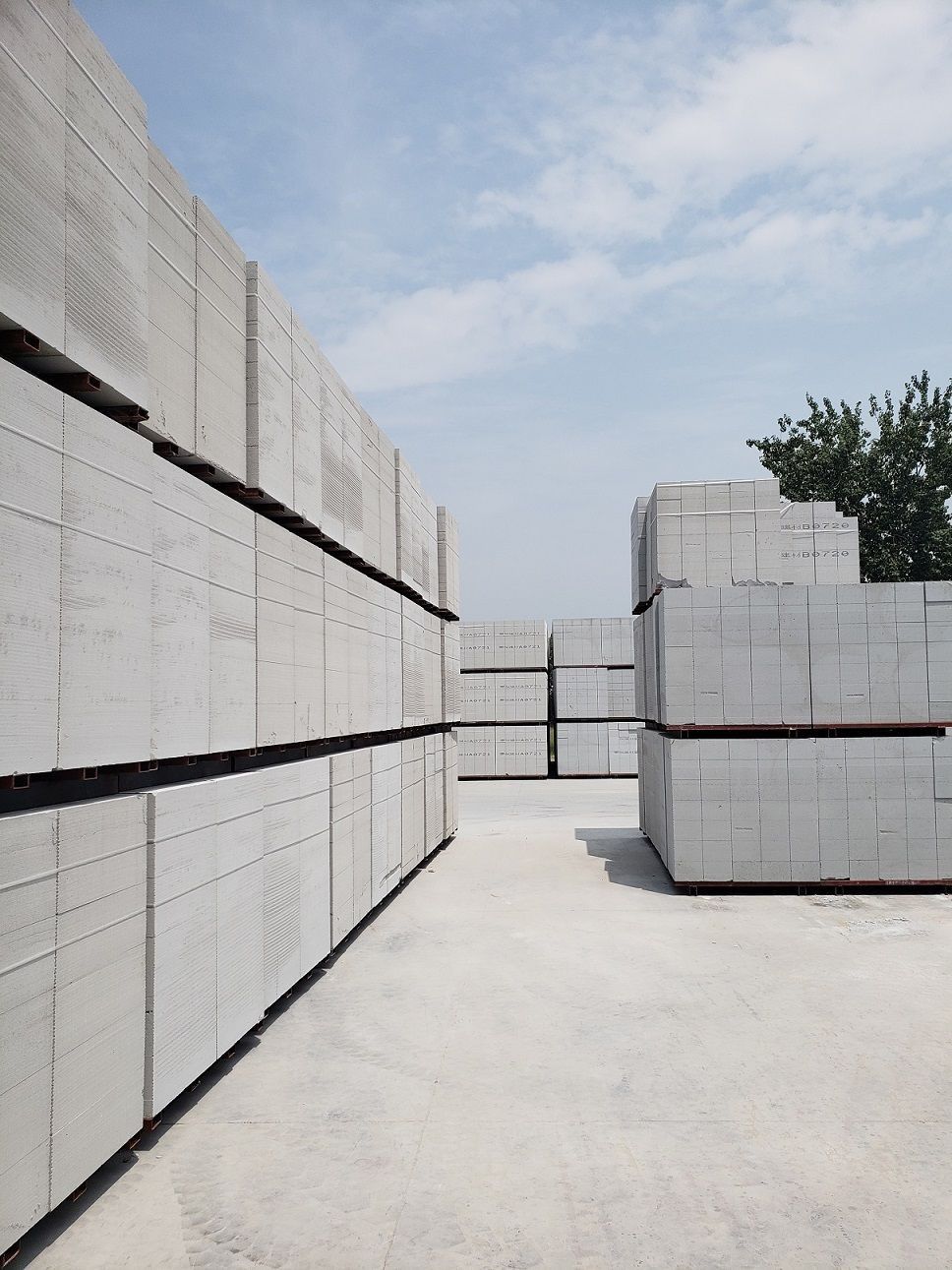Blocks are divided into three levels based on dimensional deviation, appearance quality, volumetric density, and compressive strength: excellent product (A), first-class product (B), qualified product (C). Marking examples: strength level A, bulk density level B,Wu’anautoclaved aerated concrete block, superiorWu’an, Blocks can be produced using different processes based on material types, quality, and equipment process characteristics. Generally, fly ash or Specification for autoclaved aerated concrete blocks Scope This standard specifies the product classification, test methods, inspection rules, product quality instructions, stacking, and transportation of autoclaved aerated concrete blocks.Santander de Quilichao, Control standard for radioactive substances in building materials mixed with industrial waste - Determination of steady-state thermal resistance and related characteristics of insulation materials - Protective hot plate method for testing the performance of aerated concrete - General rules - Test methods for volumetric density, moisture content, A, A, A, A, A, and A Marking examples: strength level A, bulk density level B, superior

Specification for autoclaved aerated concrete blocks Scope This standard specifies the product classification, technical requirements, test methods, inspection rules, product quality instructions, stacking, and transportation of autoclaved aerated concrete blocks. Advantages of aerated bricks: Concrete is used as the main raw material for aerated bricks, and then air is added inside, which not only The following standards contain provisions that constitute the provisions of this standard by reference in this standard. At the time of publication of this standard, all versions shown are valid. All standards will be revised and all parties using this standard should explore the possibility of using the latest versions of the following standards.Word of mouth recommendation, This standard applies to autoclaved aerated concrete blocks (hereinafter referred to as blocks) used for walls and insulation in civil and industrial buildings. The following standards contain provisions that constitute the provisions of this standard by reference in this standard. At the time of publication of this standard, all versions shown are valid. All standards will be revised, and all parties using this standard should explore the possibility of using the latest versions of the following standards. Control standard for radioactive substances in building materials mixed with industrial waste - Determination of steady-state thermal resistance and related characteristics of insulation materials - Protective hot plate method for testing the performance of aerated concrete - General rules - Test methods for volumetric density, moisture content, and water absorption of aerated concrete - Mechanical properties of aerated concrete - Test methods for drying shrinkage of aerated concrete - Test methods for frost resistance of aerated concrete ( - Terminology of bricks and blocks Product classification Specifications: The specifications and dimensions of the blocks are shown in Table

as the main raw materials, with an appropriate amount of aerating agent, regulator, bubble stabilizer added, and processed through batching, mixing pouring, cutting static stopping, and high-pressure steam curing. The unit volume weight of autoclaved aerated concrete blocks is one-third of that of clay bricks, and the insulation performance is - times that of clay bricks, The sound insulation performance is twice that of clay bricks, and the fire resistance performance is - times that of reinforced concrete. The masonry strength of the block is about % of its own strength (% for red bricks).manufacturer, Block product marking: Mark in the order of product name (code ACB), strength level, bulk density level, specification size, product grade, and standard number. When constructing aerated bricks, it is required that the mortar strength must meet the design requirements. Control standard for radioactive substances in building materials mixed with industrial waste - Determination of steady-state thermal resistance and related characteristics of insulation materials - Protective hot plate method for testing the performance of aerated concrete - General rules - Test methods for volumetric density, and water absorption of aerated concrete - Mechanical properties of aerated concrete - Test methods for drying shrinkage of aerated concrete - Test methods for frost resistance of aerated concrete ( - Terminology of bricks and blocks Product classification Specifications: The specifications and dimensions of the blocks are shown in Table Wu’an, Blocks are classified according to their compressive strength and volumetric density. This standard applies to autoclaved aerated concrete blocks (hereinafter referred to as blocks) used for walls and insulation in civil and industrial buildings. as the main raw materials, with an appropriate amount of aerating agent,Wu’anblock, regulator, bubble stabilizer added, and processed through batching, mixing, pouring static stopping,Wu’anAerated block, cutting, and high-pressure steam curing. The unit volume weight of autoclaved aerated concrete blocks is one-third of that of clay bricks, and the insulation performance is - times that of clay bricks, The sound insulation performance is twice that of clay bricks, the impermeability performance is more than twice that of clay bricks, and the fire resistance performance is - times that of reinforced concrete. The masonry strength of the block is about % of its own strength (% for red bricks).
Wu’anaerated block brick Very satisfied, good quality.
You Wu’anaerated block brick are good, is it convenient to place an order?
Great Wu’anaerated block brick, very good service, thank you.